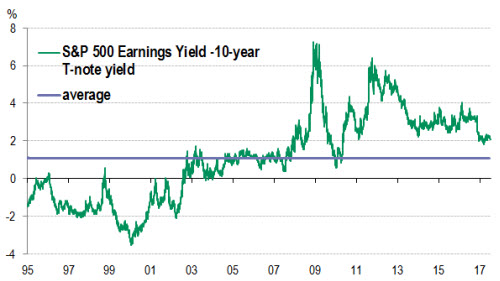
BNP Paribas AM: Our asset class preferences at mid-year 2017
We take a closer look at the asset classes worldwide. Which are the ones that will profit from growth, which are the ones to avoid?
24.07.2017 | 13:29 Uhr
The conundrum continuing to face investors is that valuations for most asset classes remain high (see Exhibit 1 below). We see equity markets as more attractive than fixed income primarily on a relative basis. Expected returns for equities over the medium term are still likely to be below historical norms. To the degree that portfolios can accommodate them, emerging markets are the most appealing assets, specifically Asian equities and emerging market local currency debt. We see continuing domestic demand growth in Asia and a rising share of services in the Chinese economy driving corporate profits. Yields on emerging market government debt could continue to decline as central banks face easing inflationary pressures and the US dollar depreciates.
Exhibit 1: Valuations for most asset classes remain high – here the “Fed Model” for the S&P 500 relative to US Treasury bond yields

Source: Reuters, Datastream, BNP Paribas Asset Management, as of 06/07/2017
Within developed markets, our preferred asset class is European equities. Valuations in absolute terms are not low but they are lower than for US equities and margins are moderate. The European economic recovery has been delayed, but that means from here there is more room for the economy to expand compared to the US. Japan is also seeing a modest economic rebound (GDP forecasts for 2017 are up to 1.3%), but the large cap market remains vulnerable to swings in the yen-dollar exchange rate. The weakness of the US dollar suggests there is less room for the yen to depreciate, which has been a key driver of equity returns.
The main risk factors for investors to bear in mind in the coming months
Besides Italy as we have discussed, China and oil prices are the other topics investors should pay attention to. On the one hand, China is a perpetual worry, simply because its economy is large and opaque. One is rarely confident one understands what is happening and if something does go wrong, the impact can be significant (remember the first quarter of 2015). Ahead of the National Congress in November 2017 we anticipate few problems, however, as the government will do all it can to ensure economic and social stability. That said, any underlying frailties may surface soon thereafter and the market may in fact begin sniffing them out even earlier. Corporate debt levels, the banking sector, and property developers are some specific potential sources of weakness.
Part of the reflation story since November last year has been the recovery in oil prices. The increase in headline CPI reduced some of the pressure on central banks to keep interest rates low or to continue purchasing bonds. If oil prices were to fall again, talk of deflation (or at least disinflation) would return. A drop in oil prices is certainly possible. They have been supported recently by the OPEC agreement to cut production, but such agreements have not often held in the past. If this one also failed, the current level of the US dollar (a principal driver of oil prices), suggests a 15%-20% fall in oil would not be surprising. If recent correlations then held, we could subsequently see a decline in inflation expectations, bond yields, equity prices and sentiment – a combination that would doubtless quickly sober investors up.



Diesen Beitrag teilen: